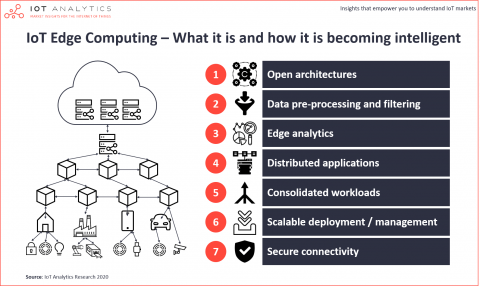As the Internet of Things (IoT) continues to grow and expand, the demand for faster, more efficient processing of data is becoming increasingly important. Edge computing is emerging as a key solution to this challenge, offering a way to handle data closer to where it is generated, rather than relying solely on centralized cloud servers.
What is Edge Computing?
Edge computing is a distributed computing paradigm that brings computation and data storage closer to the location where it is needed. Instead of sending data to a centralized data center or cloud server for processing, edge computing allows for data to be processed at the “edge” of the network – closer to the devices and sensors that are generating the data.
By moving processing power closer to the source of the data, edge computing reduces latency and bandwidth usage, enabling faster decision-making and more efficient use of network resources. This is particularly important in IoT networks, where large amounts of data are generated by a multitude of devices and sensors in real-time.
Benefits of Edge Computing in IoT Networks
There are several key benefits to implementing edge computing in IoT networks:
Reduced Latency: By processing data closer to where it is generated, edge computing reduces the time it takes to make decisions based on that data. This is crucial in applications where real-time responses are required, such as industrial automation or autonomous vehicles.
Improved Security: Edge computing can enhance security by keeping sensitive data closer to its source and reducing the number of points where data is transmitted over a network. This helps to mitigate the risk of data breaches and cyber attacks.
Scalability: Edge computing allows for greater scalability by distributing processing power across a network of edge devices, rather than relying on a single centralized server. This flexibility makes it easier to expand IoT networks and accommodate growing data volumes.
Cost Efficiency: By reducing the amount of data that needs to be transmitted over a network, edge computing can help to lower bandwidth costs and improve the efficiency of network infrastructure. This can result in cost savings for organizations deploying IoT networks.
Challenges of Edge Computing in IoT Networks
While edge computing offers many benefits, there are also some challenges that need to be addressed in order to fully realize its potential in IoT networks:
Resource Constraints: Edge devices may have limited processing power and storage capacity, which can impact their ability to effectively handle large amounts of data. Optimizing algorithms and deploying edge servers with sufficient resources is essential to overcome this challenge.
Interoperability: Ensuring that edge devices and sensors can communicate effectively with each other and with cloud-based systems is crucial for seamless integration within IoT networks. Standardized protocols and communication interfaces are essential to address interoperability issues.
Data Security: Securing data at the edge of the network can be more challenging than securing data in a centralized data center. Implementing robust encryption and authentication mechanisms is essential to protect sensitive data from unauthorized access.
Conclusion
Edge computing is revolutionizing the way data is processed and analyzed in IoT networks, offering a more efficient and cost-effective alternative to traditional cloud computing. By moving processing power closer to the source of data, edge computing enables faster decision-making, reduced latency, improved security, and greater scalability in IoT applications.
While there are challenges to overcome, the benefits of edge computing make it a promising solution for organizations looking to enhance the performance and efficiency of their IoT networks. As the technology continues to evolve, we can expect to see even greater integration of edge computing in IoT applications, driving innovation and enabling new possibilities in the connected world.
